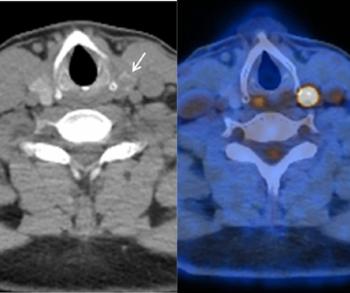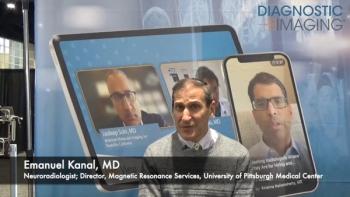
CAD vendors build on alliances, develop unconventional applications
New technologies go beyond mammographyInitially, CAD seemed DOA. Most physicians balked at the idea that technology would ever supplant human knowledge, as the pioneers of computer-aided diagnosis seemed intent on doing. Over the
New technologies go beyond mammography
Initially, CAD seemed DOA. Most physicians balked at the idea that technology would ever supplant human knowledge, as the pioneers of computer-aided diagnosis seemed intent on doing. Over the years, however, CAD proved conventional wisdom wrong, winning acceptance as a diagnostic tool despite seemingly intractable resistance.
Vendors recast the technology as an aid in detection rather than diagnosis, and this subtle distinction paved the path to adoption. A rising diagnostic workload being handled by an ever-smaller group of diagnosticians helped convince physicians of CAD's usefulness. Now vendors are moving into other areas of medicine.
CAD is accepted as a valuable tool for simplifying the interpretation of x-ray mammograms. Soon developers hope to go beyond mammography to establish the clinical value of CAD in CT, MR, and PET/CT. In the process, they will certainly broaden their customer base and, possibly, change the very practice of medicine.
R2 Technology has dug deep into mammography CAD, having formed alliances with GE Medical, Hologic, Siemens, and Fischer Imaging to integrate its software with new digital systems. But there's much more to be done, according to Raymond Tecotkzy, R2's director of marketing for digital mammography, and no time to waste.
"If we have to wait for others to bring our advanced CAD applications to the eyeballs of mammographers, it may take too long to deliver the value we have to offer," he said. "We have strong relationships with our partners, but we're going to introduce CAD functionalities more rapidly to the market and then extend and offer them to all of our partners."
R2 is hoping to accelerate the delivery of advanced CAD applications to physicians by developing its own universal breast imaging workstation in conjunction with MeVis BreastCare in Bremen, Germany. The workstation is scheduled for commercial release in early 2004. Among the enhancements for CAD mammography are variable size markers that allow radiologists to dismiss false markers more easily, a reference library that provides biopsy-proven malignant and benign cases as bases of comparison, an optimization algorithm that makes film more comparable to digital mammograms, and an algorithm that calculates glandular breast density.
Beyond mammography, R2 is developing an automated thoracic detection and measurement package for CT that it will sell directly as a stand-alone in the U.S. and overseas. The company will market the thoracic product's components to third parties for wider distribution. Its next-generation CAD system for helping to identify abnormalities on PET/CT is also in the works.
Confirma, which began marketing its CADstream system for breast MR in 2002, is taking analytical algorithms into surgical planning and treatment monitoring by adding angiogenesis mapping, multiplanar reformatting, maximum intensity projection, 3D navigation, and summaries of changes in lesion volume, size, and enhancement over time.
"We are going to move to other MR applications, especially contrast enhancement, for brain, cardiac, and liver studies and postprocessing in MR angiography," said Daniel Bickford, vice president of sales and marketing for Kirkland, WA-based Confirma.
CADx and iCAD, now united as a result of a merger announced at the RSNA meeting, are offering a full range of CAD products to a wider buying audience and bolstering their own individually strong distribution channels (see "Ranks of CAD industry narrow with merger of CADx and iCAD," page 4).
Less than two years after its birth, the privately owned CAD newcomer VuCOMP is introducing a new mammography system to the ripening CAD market. The system, which was unveiled at the RSNA meeting, includes the M-Vu Processor and M-Vu Display. The processor features proprietary VuCOMP image-understanding algorithms that differ from the typical pattern recognition approaches currently in use. It also offers high-speed multiprocessor technology and touchscreen control.
The processor can scan 27 to 30 cases per hour, depending on film size, and provides a resolution of 44.5 microns. The display consists of a 19-inch LCD monitor, four-way adjustable monitor arm, integrated laser barcode reader, and optical mouse. The company will submit the M-Vu mammography system for FDA and CE mark approval in the second quarter of 2004.
Dallas-based VuCOMP is working on the addition of a digital capability to M-Vu so customers can convert from analog to analog/digital with a simple software upgrade. The company also plans to develop products for other areas of radiology that rely on reviewing multidimensional data.
Newsletter
Stay at the forefront of radiology with the Diagnostic Imaging newsletter, delivering the latest news, clinical insights, and imaging advancements for today’s radiologists.



























